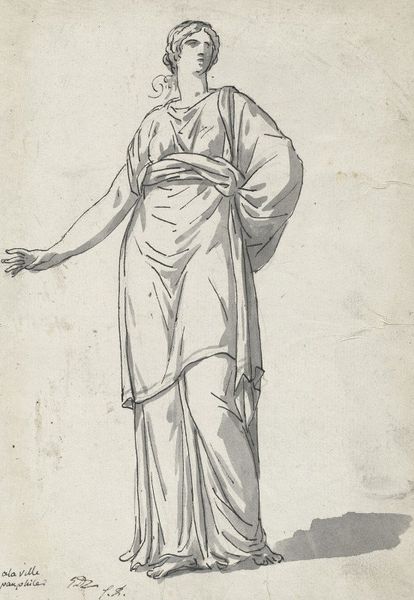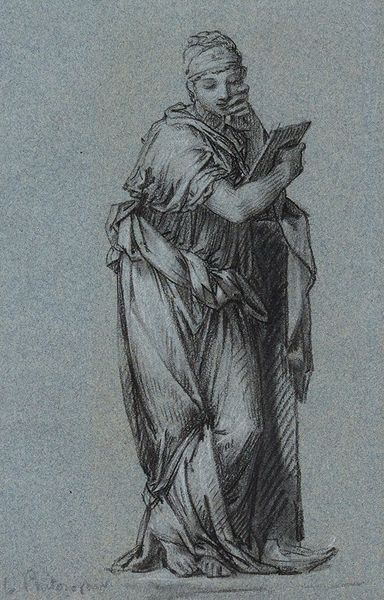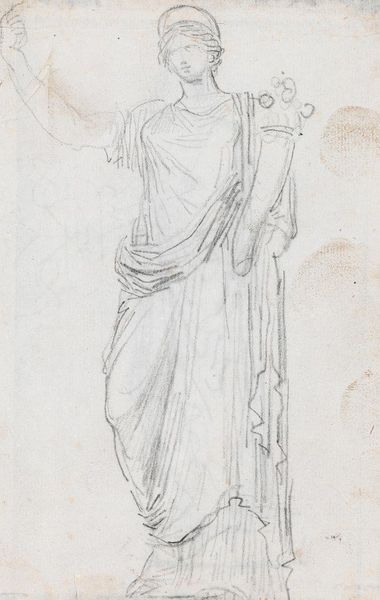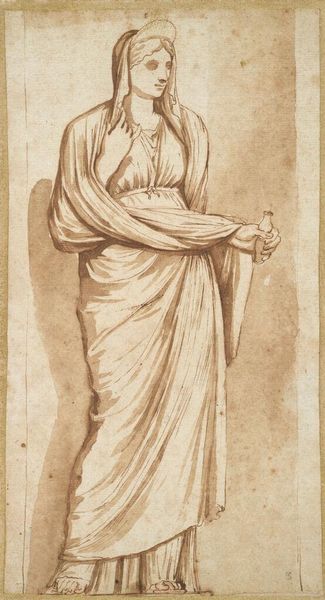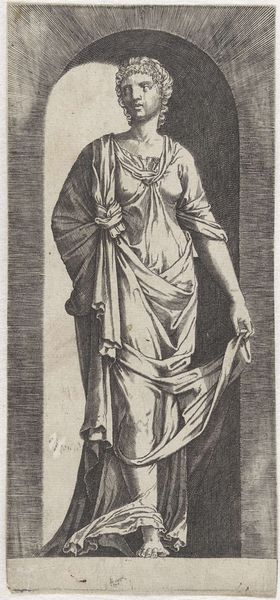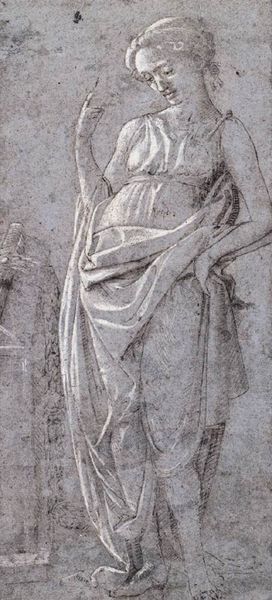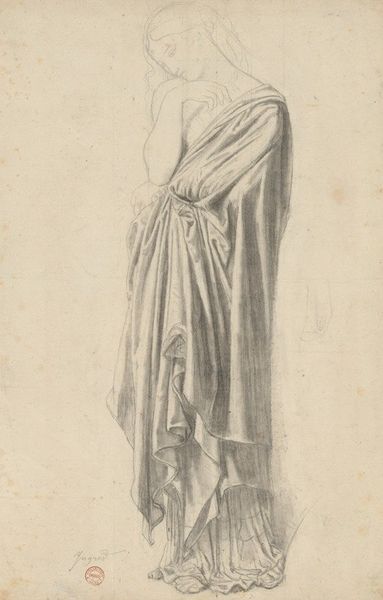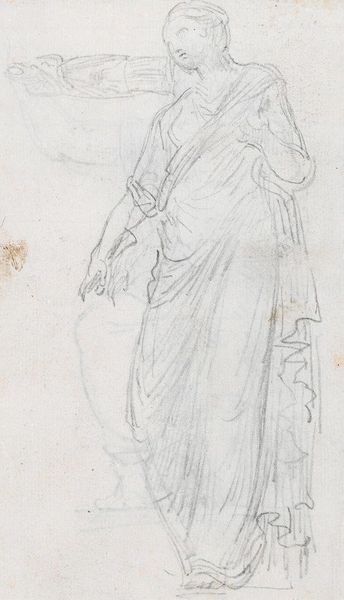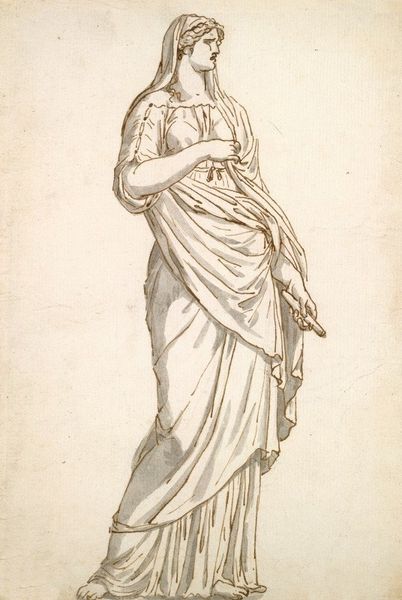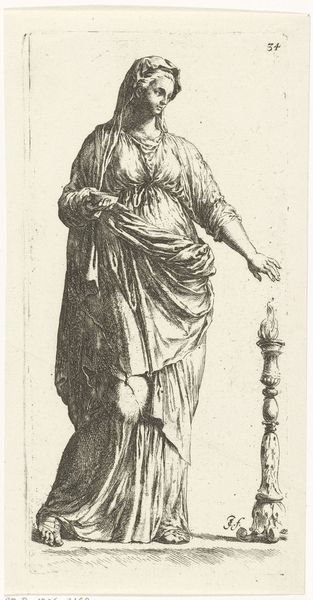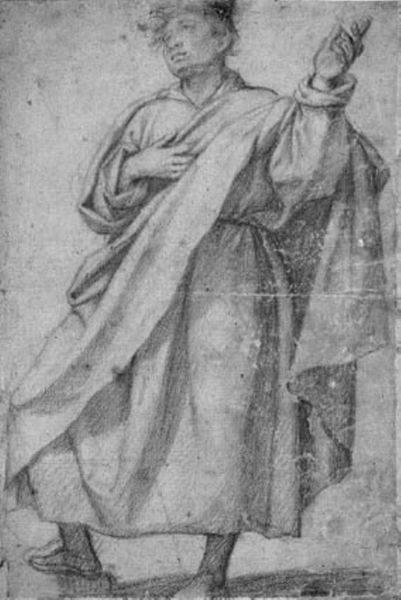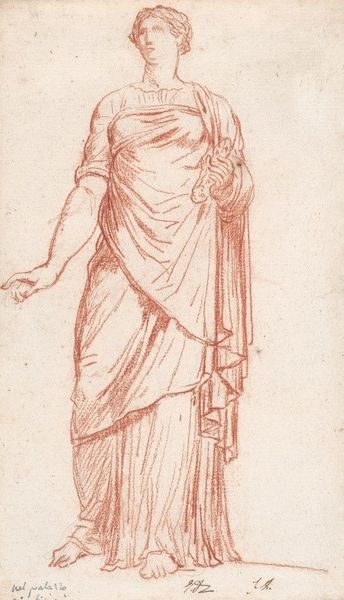
drawing, pencil, graphite
#
portrait
#
pencil drawn
#
drawing
#
pencil sketch
#
charcoal drawing
#
pencil drawing
#
pencil
#
graphite
#
italian-renaissance
Copyright: Public domain
Curator: Standing before us is Filippo Lippi’s “Figure Study,” a graphite drawing created around 1465, and now residing in the Uffizi Gallery in Florence. Editor: It’s a preliminary sketch, yes? I'm immediately struck by its ghostly presence—almost ethereal. You can see the under-drawing, the tentative lines searching for form. Curator: Precisely. It provides valuable insight into Lippi’s working methods. The materials themselves – graphite on paper – were increasingly available and relatively inexpensive at the time, allowing for more preparatory studies than ever before. This reflects a shift toward valuing the artist's process. Editor: I’m seeing echoes of the patriarchal structures of the time in the figure's deliberate obscuring—only parts are fleshed out, withholding the subject’s full presence. This seems deeply rooted in societal restrictions around the visibility of the individual, possibly, their worth or relevance during that time. Curator: An interesting point. Consider the role of apprentices in Lippi’s studio; drawings such as this would likely have been teaching aids, focusing attention on specific elements—drapery, perhaps, or anatomical details. The use of line and shading suggests a desire to master rendering the texture and weight of cloth. Editor: But wouldn’t those choices on fabric have significant cultural weight then, too? Think of the social semiotics communicated through textiles: hierarchy, affluence, even devotion based on how it would look in contrast to those surrounding the wearer. That rendering isn’t neutral. Curator: That’s insightful. The relative affordability of graphite allowed for broader artistic experimentation in the era. Editor: Still, those graphite marks denote specific material relationships, and those specific Renaissance power structures impacting whose body is drawn and for what end. I can’t unsee how Lippi’s economic or practical artistic goals remain enmeshed in cultural complexities around agency during the period. Curator: It’s interesting to think of it from that angle; that what may appear as casual sketching can become more impactful if examined via intersecting ideologies. Thanks to Lippi’s skill, though, this sketch reveals how art reflects prevailing circumstances while subtly questioning convention. Editor: I agree. Spotlighting how “Figure Study” captures intersections from societal impact through choices like cloth underscores art’s powerful and ever-present links throughout cultural evolution.
Comments
No comments
Be the first to comment and join the conversation on the ultimate creative platform.
